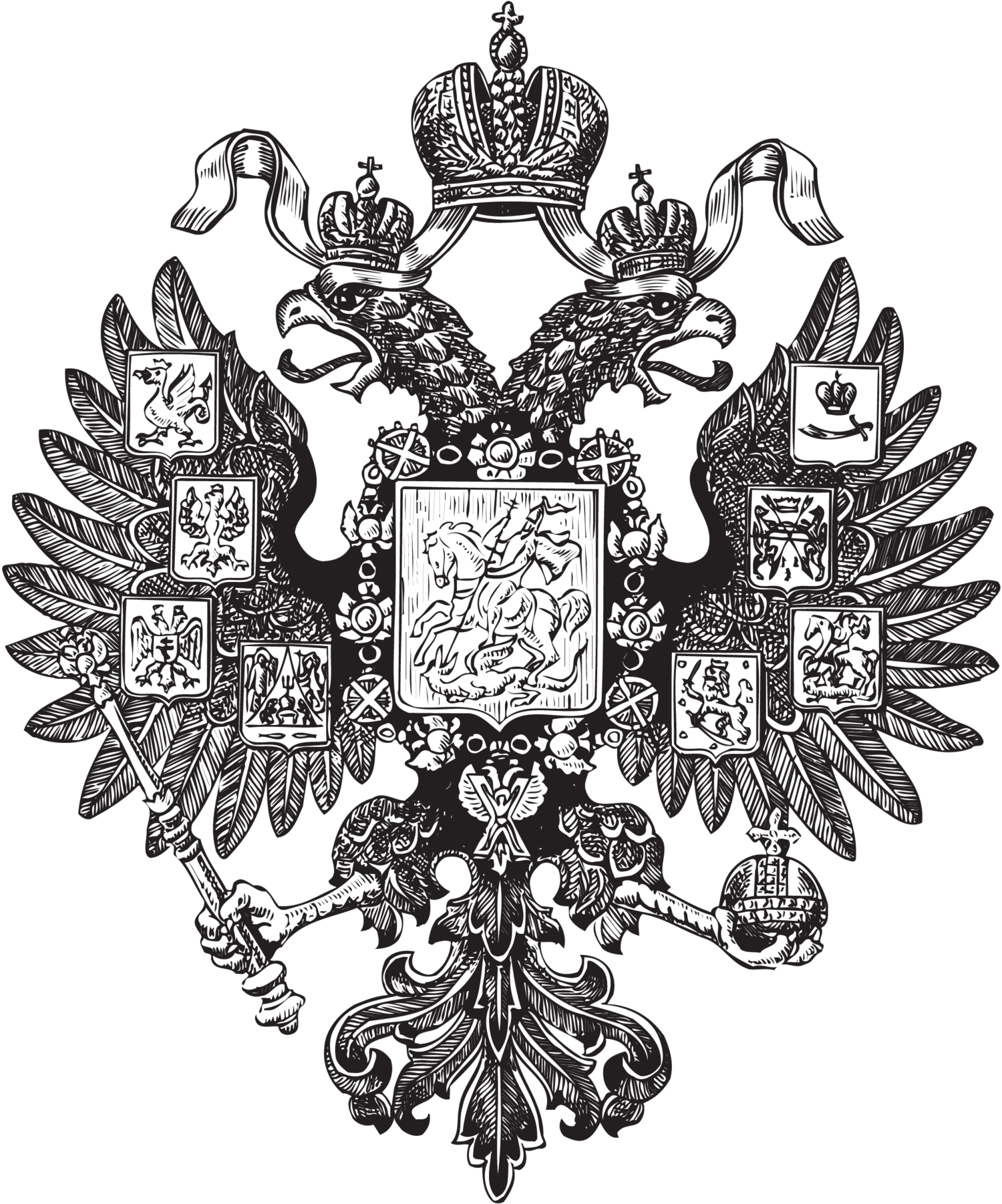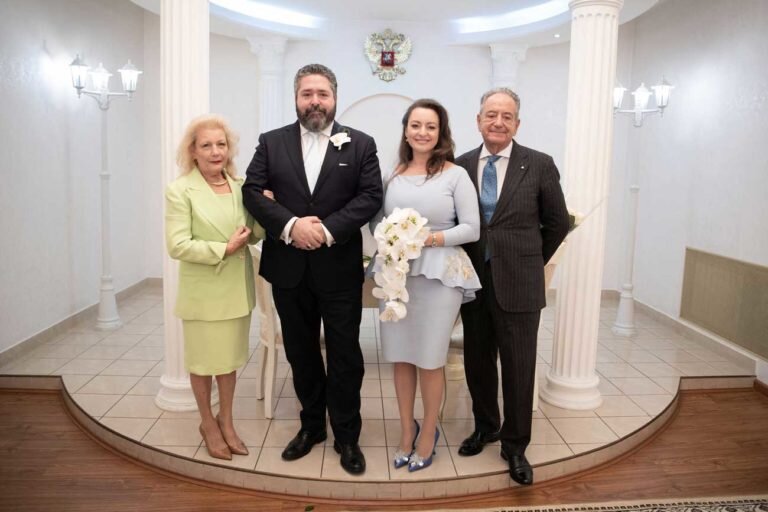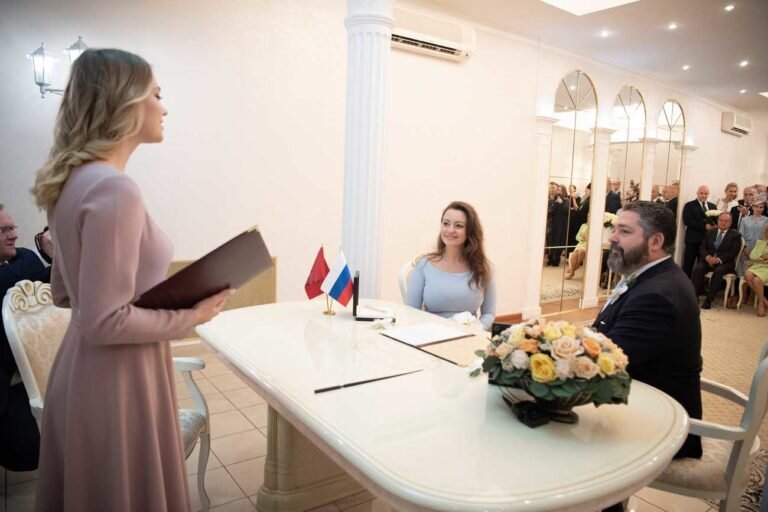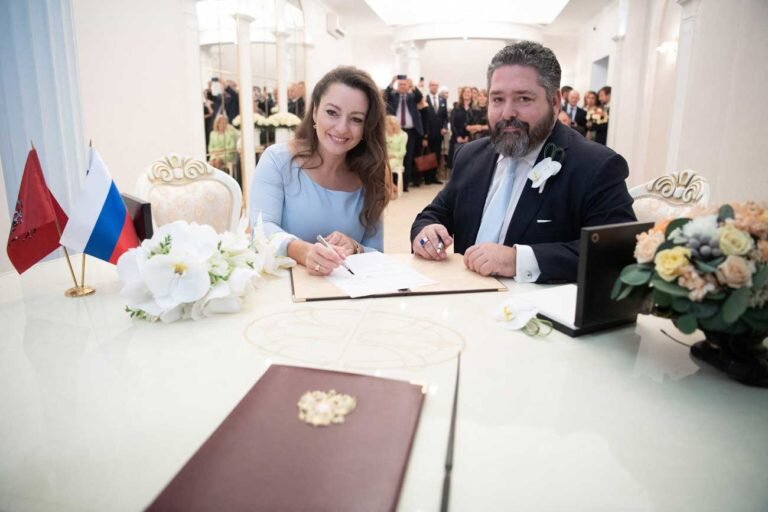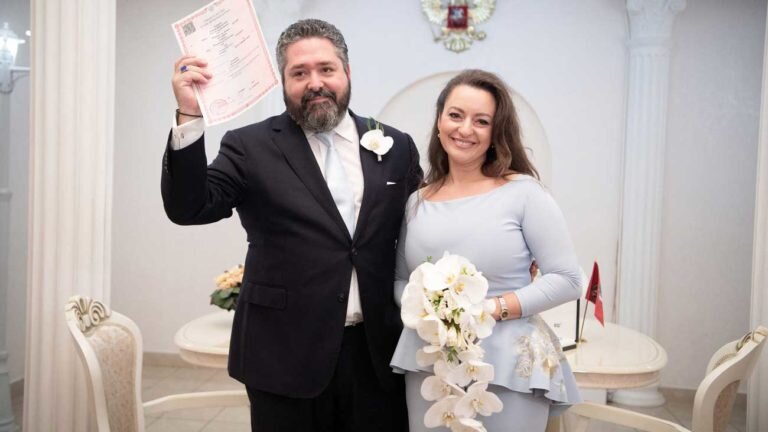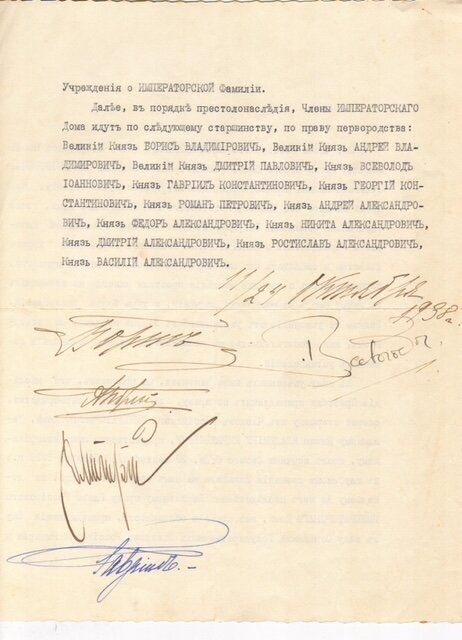In response to a Tweet from Rostislav Romanov, in which he used the style “Imperial Highness” in contravention to the Fundamental Laws of the Russian Empire and the Russian Family Association’s own rules, the Russian Nobility Assembly (RNA) in Moscow issued a public statement clarifying the misuse of the title and Rostislav Romanov’s status as a Romanov descendant but not a Romanov dynast. It was initially assumed by many, including The Russian Legitimist, that the use of the title was merely a mistake; and not wishing to cast a pall over his upcoming religious wedding, we chose not to publish the RNA’s statement.
Last evening, however, via social media, it was confirmed that the groom issued the invitation to his religious ceremony as “Son Altesse Impériale le Prince Rostislav Rostislavovich Romanov”. This usurpation was clearly an act of the young American Romanov’s own volition, and so we are now publishing the letter from the Moscow-based Russian Nobility Assembly so that there will be no confusion among those who follow the news and activities of the Russian Imperial House today.
The Russian Nobility Assembly is an association of more than 12,000 members in Russia, with several branches abroad, and includes descendants of noble families of the Russian Empire. The Assembly of the Nobility was abolished in Russia after the 1917 Revolution but was re-established in 1990 and has enjoyed since then a close relationship with the Imperial House of Russia, acknowledging first HIH Grand Duke Wladimir Kirillovich, and currently, his daughter HIH Grand Duchess Maria Wladimirovna as heads of the Imperial House.
There is no legal basis or historical precedent that would justify Rostislav Rostislavovich’s adoption of the style of Imperial Highness. The Russian Fundamental Laws are clear on the distribution of titles and styles within the Imperial House. These Laws make it clear that Rostislav Rostislavovich is neither a member of the Imperial House nor is he entitled to this title and style. It is well known that, from the time of Emperor Alexander III, there were two categories of dynasts in the Imperial House: Grand Dukes and Grand Duchesses of Russia, who had the right to be called Your Imperial Highness, and Princes and Princesses of the Imperial Blood (Princes and Princesses of Russia), who had the right to be called Your Highness. The bridegroom's grandfather, His Highness Prince of the Imperial Blood Rostislav Alexandrovich, who was fully a member of the Imperial House, would never have dared to call himself Imperial Highness. It is inexplicable that his grandson, who is not a member of the Imperial House, would do so.
Rostislav Rostislavovich’s own father, the American-born Rostislav Rostislavovich Romanov, Jr., never used any title, let alone a style to which his own father had no right. HH Prince Rostislav Alexandrovich of Russia was a male-line great-grandson of Emperor Nicholas I, and entitled to the style of His Highness and title of Prince of the Bood Imperial. This usurpation goes against the Romanov Family Association’s bylaws that any claims of a dynastic character are to be avoided. To use an imperial style is to stake a dynastic claim.
The letter reads as follows with minor edits for clarity:
Moscow, 6th September 2021
The Russian Nobility Assembly is an Association that has gathered in Russia over 12,000 members and has several delegations abroad, whose members are descendants of Old Noble Families of the Russian Empire,which was restored in 1990 in close cooperation with the Imperial House of Russia, whose Head at the time was His Imperial Highness Grand Duke Vladimir Kyrillovich. and after 1992, his daughter and successor Her Imperial Highness Grand Duchess Maria Vladimirovna, as the only legitimate Heir of the Russian Imperial House.
There are many descendants of the Romanov Family who are not members of the historical Dynasty by the laws that were in force at the time of the Russian Empire.
Some of these persons have thus created the Romanov Family Association, which is a private association of members of the Romanov Family.
The Association was intended as a private association in which the Head of the Association is elected through a vote carried out by the members of the Association itself. This is why the Russian Nobility Assembly states that these members are not in any sort of way linked to the historical dynastic institution of the Russian Imperial House.
The Russian Imperial House is an institution that is officially recognised by the Patriarchate of Moscow and all Russia, as well as by the institutions of the Russian Federation, by foreign authorities, as well as by other reigning and non-reigning royal families across the world. The Russian Imperial House is also the Fons Honorum for our Association.
The Members of the Russian Nobility Association extend their warmest congratulations on the occasion of the upcoming wedding of Rostislav Romanov but must emphasise that although Rostislav Romanov is a true descendant of the Romanov Family, his marriage is a private event which does not bear any social or dynastic importance. We wish the newlyweds and their 8 year-old son "Многая лета [Many years]!"
Marshall of the Russian Nobility,
Marshall of the Moscow Nobility,
O.V. Shcherbachev
